
Taslim Imad
Published: January 29, 2024
Overview
It has long been recognised that ships are a vector by which aquatic organisms can be transferred between marine environments. This has potential to inflict environmental damage through the transfer of organisms that can overwhelm others in the environment to which they have been introduced. The principal cause of the introduction of invasive aquatic species is through the discharge of ballast water, and that risk has been addressed by the Ballast Water Management Convention which came into force in September 2017.
However, ballast water is not the only means by which potentially damaging aquatic organisms can be transferred, and there is now increasing focus upon the risk posed by the biofouling on the underwater hulls of ships.
Such biofouling can lead to the accumulation of organisms that pose a serious threat to sensitive or protected marine ecosystems. In order to combat this issue, several countries have implemented strict monitoring and control measures, with vessels being required to undergo inspection and cleaning before being allowed to undertake operations in controlled areas. Failure to comply with the requirements of these states can result in significant unplanned costs and the potential for reputational damage in the context of ESG and Sustainability.
As an example of the risk posed by biofouling, the presence of high-risk invasive species on a localised section of its hull, a passenger ship was prevented from sailing through the Fiordland National Park by New Zealand authorities, causing it to curtail its scheduled cruise. To resume operations, it was necessary for the ship's operator to work with the local authorities to undertake hull cleaning, which was hindered by poor weather conditions. Several other vessels have also been affected by similar restrictions and deviations, resulting in costly unplanned cleaning of their hulls. This has been particularly prevalent for vessels reactivated from lay up. The task of carrying out unplanned cleaning on ships can be quite challenging due to the limited availability of resources, unfavourable weather conditions, and the much higher cost of undertaking that work in such circumstances.
The response to the effects of climate change involves a significant reduction in vessel greenhouse gas (GHG) emissions. One of the key ways that vessel operators can reduce their fuel consumption, and hence GHG emissions, is by regularly cleaning and maintaining the hull to minimize drag. In undertaking such cleaning, it is important to pay attention to so-called “niche” areas. These areas are locations such as sea chests, sea chest gratings, bow and stern thrusters, bow and stern thruster gratings, fin stabilizers and recesses, out-of-water support strips, propellers and propeller shafts, and rudders.
However, niche areas can often be neglected because of the cost and time involved in cleaning them effectively, even though they can still affect vessel performance. From a biofouling perspective though it is important to remember that these areas can constitute sources of potential infestation from invasive aquatic organisms, as achieving effective anti-fouling protection and cleaning standards is difficult Furthermore, preventing fouling in these niche areas can be a major challenge, putting them at high risk for infestation. This is why, consequently, authorities are increasingly focusing on the need to monitor and maintain these areas.
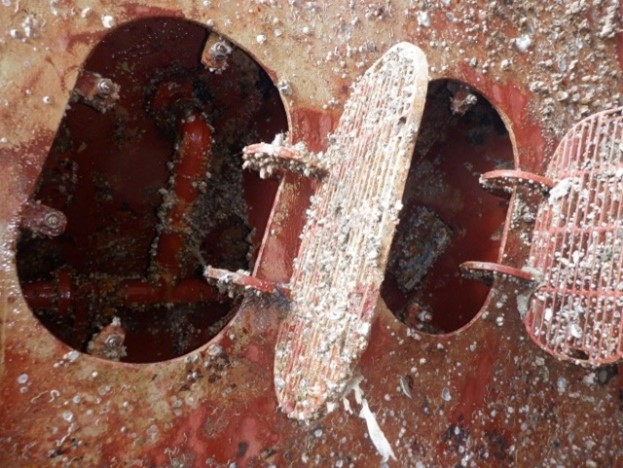
The maintaining and implementing a well-planned hull biofouling management system can help alleviate some of these challenges. The IMO’s 2023 Guidelines for the Control and Management of Ships Biofouling to Minimize the Transfer of Invasive Aquatic Species provide the framework for the development of an effective biofouling management plan. The IMO provides a helpful list of items that a ship owner or operator should consider incorporating into the plan. The plan serves to monitor the fouling condition and maintenance regime of the ship, assist in compliance with regional regulations, and provide the necessary supporting documentation to establish the hull's condition.
The effective implementation of such a plan offers added benefits of increased fuel efficiency for environmental compliance and cost saving, in addition to mitigation of the risk of environmental damage.
In addition to growing awareness of the impact of hull fouling on the environment, there is also concern about the potential negative consequences of the release of anti-fouling coatings, and dispersion associated with in-water cleaning methods. These practices can release invasive species into the environment, causing further harm to local ecosystems. As a result, there is a need for greater scrutiny and regulation of these activities to minimize their environmental impact.
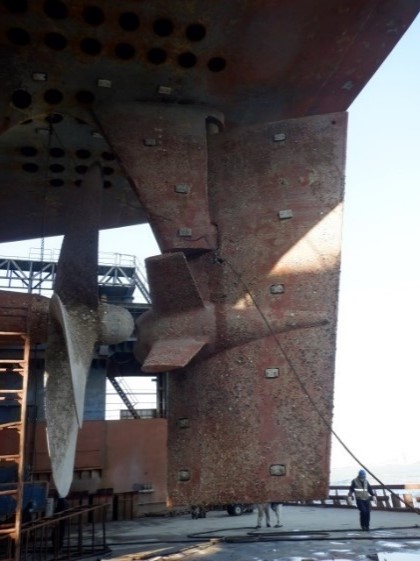
Which authorities are regulating hull fouling?
To regulate and control the spread of invasive species via ships, some states have established standards and procedures with which vessels are required to comply.
New Zealand
In October 2023 The New Zealand Ministry of Primary Industries (MPI) updated its Craft Risk Management Standard (CRMS), introducing the biosecurity requirements for vessel topsides and biofouling which entered into force on 13 April 2025, following an 18-month lead-in period.
Vessels entering New Zealand territorial waters are required to meet the clean hull thresholds by adopting acceptable measures to demonstrate compliance as set out in section 1.5(3) of the CRMS. Vessels are categorised as either short-stay or long-stay based on their anticipated duration in port, with acceptable biofouling thresholds identified for each instance. The MPI require vessels to adhere to defined minimum reporting requirements in order to demonstrate that the condition of hull and niche areas meet the appropriate biofouling thresholds.
Australia
Australia also enforces biofouling management requirements through The Biosecurity Amendment (Biofouling Management) Regulations 2021, which have been in place since June 2022. This introduced requirements for operators of all vessels to provide information on biofouling management practices prior to arriving in Australia. Initially introduced as an 18 month “education phase”, that came to an end on 15 December 2023. The next phase of implementation is focused on transitioning to business-as-usual management of biofouling, which includes operating under the department’s established compliance policy. Vessels must submit relevant information on biofouling management to the Australian Ministry of Agriculture, Fisheries and Forestry through a web portal called MARS.
Vessels are expected to demonstrate one of 3 options:
Implementation of an effective biofouling management plan.
Cleaning undertaken 30 days prior to arriving in territorial waters.
Alternative management plan pre-approved by the department.
Vessels that have successfully implemented a biofouling management plan, which includes hull cleaning within the last 30 days or a preapproved plan, are likely to be subject to less intervention. However, it is important to note that if intervention identifies the need for hull cleaning, the permission to undertake such work can be complex and dependent on the degree of risk. That in turn depends upon the type of coating and the type of hull infestation. Infringement notices, civil penalties, or criminal prosecutions may be imposed on those who fail to comply with the Biosecurity Act.
In Australia, the In-water cleaning (IWC) standards are currently being developed through public consultation. Once finalized and published, the standards will provide vessels with appropriate ways to manage biofouling and the necessary requirements for fouling removal in Australian territorial seas. Members are advised to monitor the situation when calling at Australian ports and consider the latest requirements imposed by the local authorities.
In 2015, Australia issued the Anti-fouling and In-Water Cleaning guidelines, which provide helpful information on the methods for in-water cleaning based on the type of anti-fouling and age. These guidelines are applied by shore-based hull maintenance facilities for cleaning procedures and the proper capture and disposal of generated waste. Updated guidelines are to be published in 2024 until then the 2015 guidelines should be followed.
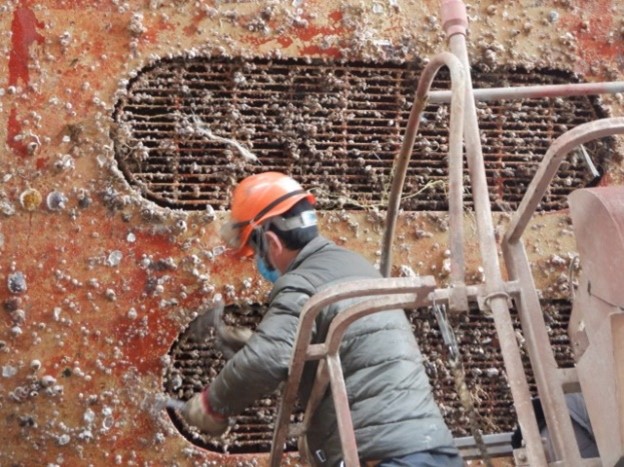
United States of America
For applicable vessels arriving at a US port, the EPA's Vessel General Permit (VGP) requires reporting of the type and date of anti-fouling application, where it was applied, and the details of hull husbandry practices in the Notice of Intent (NOI). This includes the frequency of cleaning, when the last hull cleaning was undertaken, the methodology of cleaning, and the next scheduled cleaning.
According to Section 2.2.23 of the Final 2013 VGP, vessel owners are required to minimize the transport of attached living organisms when traveling into US waters, or between COTP zones, with management measures that include anti-fouling application and hull maintenance, including in niche areas. The document provides further details on cleaning activities, especially waterborne methods, to prevent the discharge of removed organisms and coatings. To minimize discharge control technologies must be adopted, or cleaning should be conducted while drydocked. Only the details of the anti-fouling coating are required in the annual reporting.
It is important to verify that there are no discrepancies in the various submissions and to be able to demonstrate, from onboard records, that the dates are within the maintenance regime stated in the NOI. Thus, adhering to the biofouling management plan and complying with relevant regulations will significantly reduce the risk of penalties and prosecution.
In accordance with the Final 2013 VGP Part 6.14, the state of Maine explicitly prohibits underwater hull cleaning unless it is necessary for emergency hull repair. Unfortunately, advanced technology is not currently permitted for use in Maine. Similarly, the state of Massachusetts specifies a limit on the chlorine content of seawater piping discharges, limiting it to 10 micrograms/l for bio-fouling control. Due to variations in local regulations and requirements, it is strongly recommended that assistance from local authority, COPT, or agents be sought before any hull cleaning is considered or attempted.
For vessels arriving in California, the Marine Invasive Species Program (MISP) enforces regulations to prevent the introduction of new species through vessel ballast water and biofouling management requirements regulated by the California State Land Commission (CSLC). Under Article 4.8 of the California Code of Regulations (CCR), all vessels carrying ballast water and arriving at a California port are required to comply. According to the CSLC, vessel biofouling is considered one of the most significant vectors for the introduction of marine nonindigenous species.
Article 4.9 of the CCR, the Marine Invasive Species Act Enforcement and Hearing Process, establishes policies and procedures for assessing and enforcing control actions, including penalties that may be levied. This Article addresses violations of ‘hull husbandry reporting’ as required under Article 4.8. As of 1 October 2017, vessels must maintain a Biofouling Management Plan and a Biofouling Record Book to demonstrate the hull's condition. To comply, vessels must submit the Marine Invasive Species Program Annual Vessel Reporting Form (AVRF) once per calendar year, at least 24 hours before arriving at a California port, through the web-based platform https://www.MISP.IO.
New vessels arriving in a California port, and lacking a biofouling management plan, may be permitted a 60-day grace period for filing. The regulations refer to the IMO Guidelines to ensure consistency in the management plan and record-keeping, including the application of anti-fouling coatings and the operation of the Marine Growth Prevention System. For vessels with an extended residency period since their last drydocking, i.e., 45 consecutive days or more (as per MISP), they must provide evidence of adequate maintenance in the niche areas consistent with the vessel's maintenance procedures. Activities like in-water inspection, cleaning, and treatment must be documented to address biofouling resulting from extended stays.
International Convention on Anti-Fouling (AFS)
The International Convention on Anti-fouling systems (AFS) has implemented prohibitions on the use of certain types of anti-fouling coatings for ships' hulls. Although these coatings prevent fouling by killing barnacles and other invasive species, but, as the result of harmful leaching compounds persisting in seawater, they can have a negative impact on aquatic species and associated food chain. Since 2008, tributyl toluene (TBT) has been banned in anti-fouling coatings under the International Convention on the Control of Harmful Anti-Fouling Systems. Additionally, as of 1st January 2023, the use of Cybutryne has also been prohibited due to its adverse impact on corals and other marine life. Anti-fouling System certificates must now indicate that the vessel is Cybutryne-free following a new or the reapplication of coating.
What is expected in the future?
Looking ahead, the IMO MEPC 80 has adopted revised guidelines for the control and management of ships' biofouling in order to minimize the transfer of invasive aquatic species. These new guidelines revoke the 2011 Biofouling Guidelines and include recommendations for the adoption of Contingency Action Plans when an increased risk of fouling is identified during routine monitoring. Furthermore, guidance on in-water cleaning is set to be developed and incorporated by 2025.
The GloFouling Programme is a collaboration between the Global Environment Facility (GEF), the United Nations Development Programme (UNDP) and the International Maritime Organization (IMO) that will address the transfer of aquatic species through biofouling. It currently includes 12 leading partnering countries, 6 regional coordinating organisations and over 50 strategic partners which include government agencies, global and regional organisations, NGOs, industry and the academia, working towards developing national and regional biofouling management strategies and action plans.
Mauritius has recently mandated the use of advanced hull cleaning equipment in its coastal waters to prevent any release of fouling, ensuring that the water is clear of micro and macro contamination.
Transport Canada, one of the founding partner nations, follows the current IMO hull fouling regulations and has issued voluntary guidance for relevant authorities on in-water cleaning of vessels. This guidance contains recommendations on proactive cleaning regimes and best practices in the case of vessels with macro fouling that need to undergo in-water cleaning, using capture and non-capture technologies when macro-fouling is localized. Other nations such as South Africa require prior permission for in-water cleaning in their coastal waters.
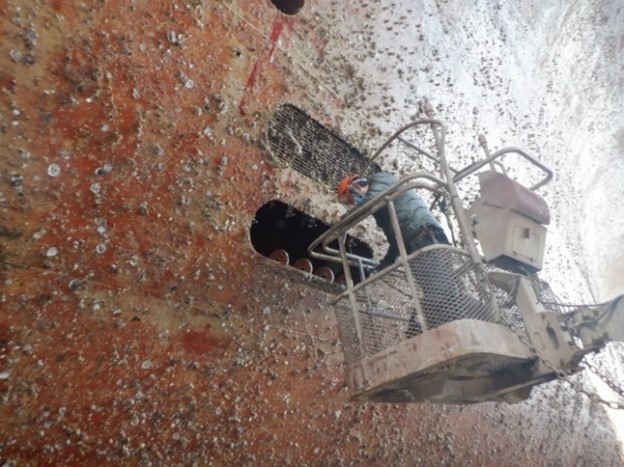
The International Convention on Anti-fouling systems is making significant strides towards minimizing the transfer of invasive aquatic species and protecting marine life. These efforts include prohibiting harmful coatings, developing guidelines for biofouling control and management, and partnering with countries to create biofouling management strategies and action plans. As the global community becomes more aware of the importance of preserving our oceans, we can hope for even more progress in this area in the years to come.
The implementation of a comprehensive hull fouling management system is essential not only to comply with local regulations but also to address a myriad of other reasons. For instance, hull fouling is often a point of contention during time charter agreements as it impedes a vessel's performance capabilities, leading to decreased propeller efficiency and increased drag. Furthermore, fouling in the sea intakes can lead to engine issues and insufficient cooling, leading to higher engine loads. By documenting and analysing potential fouling issues, including those arising from extended operation in tropical climates, or prolonged unplanned stoppages, a detailed management plan can justify specific cleaning procedures as recommended by the coating installer.
In addition, keeping a ship's hull clean is an important factor in reducing greenhouse gas emissions and improving fuel efficiency, as recognized in the development of the Ship Energy Efficiency Management Plan. A report by the GloFouling Partnership further emphasizes the significant savings in GHG emissions that can be realized through the implementation of an effective biofouling management plan, potentially reducing emissions by up to 25-50%. Even a thin slime layer on the hull can cause a 25% increase in GHG emissions, highlighting the importance of effective fouling control.
With the increasing focus on reducing carbon intensity, the use of alternate fuels, and coastal biosecurity, regulatory authorities are scrutinizing fouling management practices. Ship operators must consider various criteria such as route optimization, just-in-time arrival, advanced coating technologies, and specialized cleaning techniques, when developing a biofouling management plan.
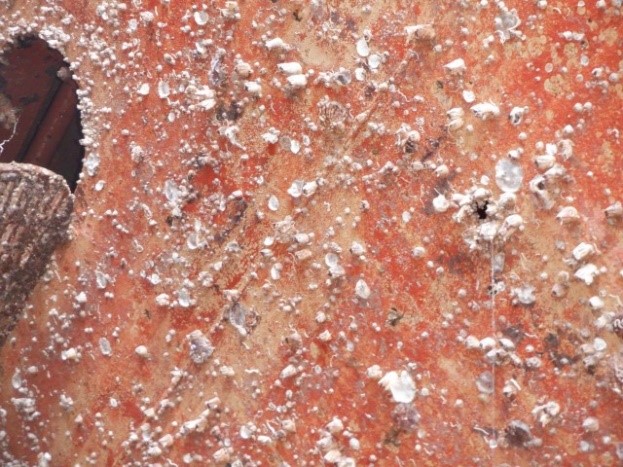
By addressing key performance indicators under Environmental Social Governance (ESG) carbon scoping, operators can ensure their vessels comply with future regulations and meet the expectations of their stakeholders.
In conclusion, while local compliance with hull fouling control is essential, it represents just the tip of an “environmental iceberg”. An effective hull fouling management plan and system can address multiple issues, improve vessel performance, reduce GHG emissions, and ensure regulatory compliance, while also enhancing ESG credentials, representing not only environmental but also commercial benefits. Ship operators must prioritise fouling control to maximize their vessel's performance and minimize their environmental impact.


